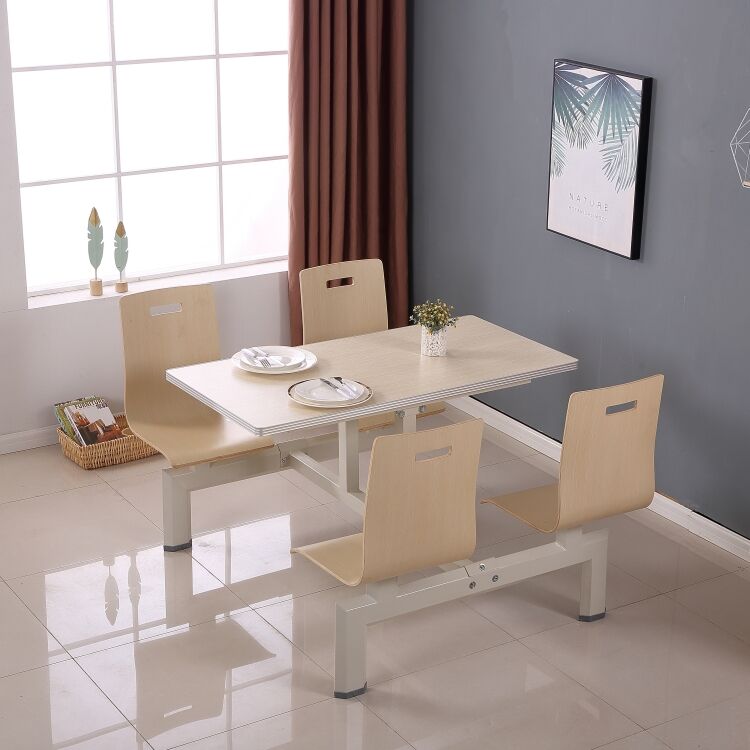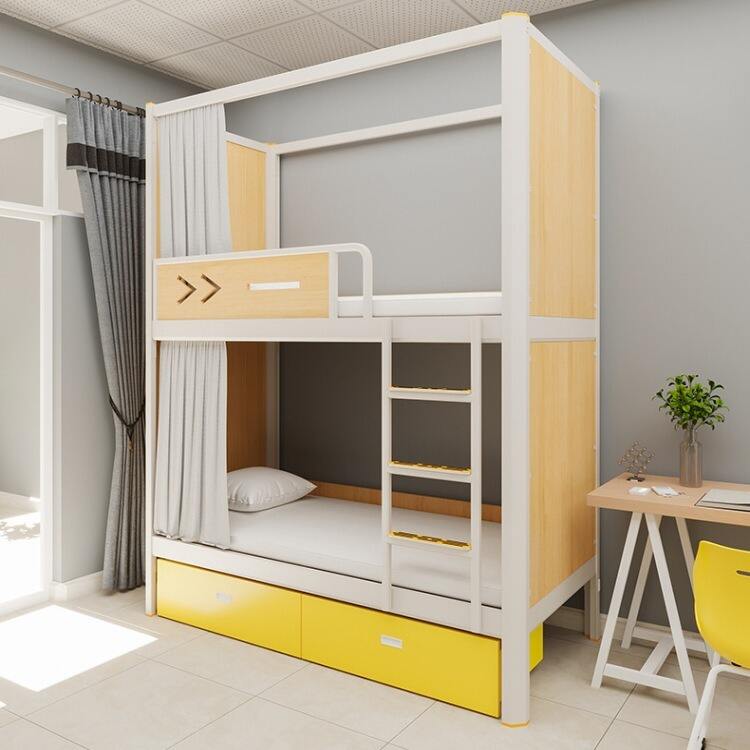Modern educational institutions require durable, functional, and aesthetically pleasing furniture solutions that can withstand daily use while providing comfort for students and staff. School cafeterias and dining areas serve as central hubs where students gather, socialize, and refuel throughout their academic day. The right canteen table and chair combination not only enhances the dining experience but also contributes to creating a welcoming environment that encourages social interaction and proper meal consumption habits among students of all ages.

School administrators and facility managers face unique challenges when selecting dining furniture that must balance functionality, safety, maintenance requirements, and budget constraints. The selection process involves evaluating multiple factors including student demographics, available space, cleaning protocols, and long-term durability expectations. Quality canteen furniture represents a significant investment that impacts daily operations and student satisfaction for years to come.
Essential Features of Quality School Canteen Furniture
Durability and Construction Standards
Educational environments demand furniture that can endure constant use, frequent cleaning, and occasional misuse without compromising structural integrity. Premium canteen table and chair sets typically feature heavy-duty metal frames constructed from powder-coated steel or aluminum alloys that resist corrosion and maintain their appearance over extended periods. The construction quality directly influences the total cost of ownership, as well-built furniture requires fewer repairs and replacements throughout its service life.
Surface materials play a crucial role in determining longevity and maintenance requirements. High-pressure laminate tabletops offer excellent resistance to scratches, stains, and heat damage while providing easy cleaning surfaces that maintain hygienic standards. Chair seats and backs constructed from molded plastic or composite materials provide comfort while resisting wear patterns that commonly develop in high-traffic educational settings.
Safety and Ergonomic Considerations
Student safety remains paramount in furniture selection, requiring designs that eliminate sharp edges, pinch points, and tip-over risks. Quality manufacturers incorporate rounded corners, smooth edge treatments, and stable base configurations that prevent accidents during normal use and movement. Proper weight distribution and low centers of gravity ensure that furniture remains stable even when students lean or shift positions during meals.
Ergonomic design principles support proper posture and comfort across diverse student populations with varying heights and body types. Adjustable height options accommodate different age groups within the same facility, while contoured seating surfaces provide adequate support without creating pressure points during extended sitting periods. These considerations contribute to improved dining experiences and reduced fatigue among students and staff.
Space Optimization and Layout Solutions
Flexible Configuration Options
Modern school cafeterias benefit from furniture systems that adapt to changing needs and multiple functions throughout the day. Modular canteen table and chair arrangements allow facility managers to reconfigure spaces for different activities including testing, assemblies, and special events. Mobile furniture solutions equipped with locking casters enable quick transitions between dining and multipurpose configurations without requiring additional storage space.
Folding and stackable designs maximize storage efficiency when furniture must be temporarily removed or stored during facility maintenance and deep cleaning operations. These space-saving features prove particularly valuable in schools with limited storage areas or multipurpose rooms that serve various functions beyond meal service.
Traffic Flow and Accessibility
Effective cafeteria layouts optimize student movement patterns while ensuring compliance with accessibility requirements and fire safety codes. Strategic furniture placement creates clear pathways that prevent bottlenecks during peak dining periods while accommodating wheelchairs and mobility aids as required by ADA guidelines. Proper spacing between tables facilitates staff movement for cleaning and supervision while maintaining comfortable social distances.
Sight lines throughout the dining area enable effective supervision by faculty and staff while creating an open, welcoming atmosphere that encourages positive social interactions. Furniture heights and arrangements should support visual monitoring without creating barriers that isolate students or impede emergency egress routes.
Material Selection and Maintenance Requirements
Surface Materials and Finishes
Table surface selection significantly impacts both appearance and maintenance demands in educational dining environments. High-pressure laminate surfaces offer superior durability and stain resistance compared to traditional wood veneers, while providing design flexibility through various colors and patterns that complement existing décor schemes. These surfaces withstand frequent sanitization procedures without degrading or losing their protective properties.
Stainless steel surfaces provide the ultimate in hygiene and durability for institutions prioritizing easy cleaning and long-term performance. While initially more expensive, stainless steel tables resist bacterial growth, chemical damage, and physical abuse while maintaining their appearance throughout extended service periods. The material choice should align with cleaning protocols and budget considerations specific to each institution.
Cleaning and Sanitization Protocols
Effective maintenance programs preserve furniture appearance and extend service life while meeting health department standards for food service environments. Quality canteen furniture features non-porous surfaces that prevent bacterial accumulation and facilitate thorough cleaning with standard institutional cleaning products. Smooth, continuous surfaces without crevices or joints eliminate hiding places for contaminants and simplify daily cleaning routines.
Chemical resistance becomes critical in environments where strong disinfectants are used regularly, particularly following health crises that demand enhanced sanitization procedures. Furniture finishes must withstand repeated exposure to bleach-based cleaners and alcohol solutions without fading, cracking, or losing their protective properties over time.
Budget Considerations and Value Analysis
Initial Investment vs Long-Term Costs
Educational institutions must balance upfront furniture costs against long-term operational expenses including maintenance, repairs, and eventual replacement requirements. Higher-quality canteen table and chair solutions typically command premium prices but deliver superior value through extended service life and reduced maintenance demands. Total cost of ownership calculations should include labor costs for cleaning, repair frequency, and replacement schedules over typical budget cycles.
Warranty terms and manufacturer support services add significant value to furniture investments, particularly for institutions with limited maintenance staff or specialized repair capabilities. Comprehensive warranties covering structural components, surface materials, and hardware provide financial protection against premature failures while ensuring consistent performance throughout the expected service period.
Funding Sources and Procurement Strategies
School districts often leverage multiple funding sources including capital improvement budgets, federal grants, and community partnerships to finance major furniture purchases. Strategic procurement timing can capture volume discounts and favorable payment terms that reduce overall project costs while ensuring coordinated delivery and installation schedules that minimize disruption to daily operations.
Collaborative purchasing programs enable smaller districts to access enterprise-level pricing and terms typically reserved for larger institutional buyers. These cooperative agreements provide significant cost savings while ensuring access to quality products that meet educational specifications and performance standards.
Installation and Implementation Best Practices
Project Planning and Coordination
Successful furniture installation requires careful coordination between administrators, facility managers, food service staff, and installation teams to minimize disruption to educational activities. Detailed project timelines account for delivery schedules, assembly requirements, and any necessary facility modifications while ensuring meal service continuity throughout the transition period.
Pre-installation site surveys identify potential challenges including doorway clearances, floor conditions, and utility locations that could impact furniture placement or assembly procedures. Professional installation teams bring specialized tools and expertise that ensure proper assembly and positioning while protecting existing finishes and equipment during the process.
Staff Training and Transition Support
Comprehensive training programs prepare custodial and food service staff to properly maintain new furniture while maximizing its service life and appearance. Training should cover appropriate cleaning products, techniques for preventing damage, and procedures for reporting maintenance issues before they compromise functionality or safety.
Ongoing support from furniture manufacturers or dealers provides valuable resources for addressing questions, ordering replacement parts, and implementing best practices discovered through operational experience. These relationships prove particularly valuable during the initial adjustment period as staff becomes familiar with new equipment and procedures.
FAQ
What factors should schools consider when selecting canteen furniture
Schools should prioritize durability, safety, maintenance requirements, and space optimization when selecting dining furniture. Key considerations include student age groups, available space, cleaning protocols, budget constraints, and expected service life. The furniture must comply with safety standards, accommodate diverse student populations, and support efficient cleaning procedures while maintaining an attractive appearance throughout extended use.
How often should school canteen furniture be replaced
Quality institutional furniture typically provides 10-15 years of service with proper maintenance, though replacement schedules vary based on usage intensity, maintenance quality, and changing facility needs. Schools should establish replacement schedules based on condition assessments, safety requirements, and budget cycles rather than arbitrary timeframes. Regular inspections help identify furniture approaching end-of-life before safety or functionality becomes compromised.
What are the benefits of investing in higher-quality furniture
Premium canteen table and chair solutions provide superior durability, reduced maintenance costs, enhanced safety features, and better warranty protection compared to budget alternatives. Higher-quality furniture maintains its appearance longer, requires fewer repairs, and provides more consistent performance throughout its service life. These benefits often justify the additional upfront investment through reduced total cost of ownership and improved user satisfaction.
How can schools maximize space efficiency in their cafeterias
Schools can optimize cafeteria space through modular furniture systems, folding tables, stackable chairs, and mobile solutions that enable quick reconfiguration for different activities. Strategic layout planning ensures efficient traffic flow while maximizing seating capacity during peak periods. Multi-purpose furniture that serves dining and classroom functions provides additional value in facilities with limited space or flexible-use requirements.


